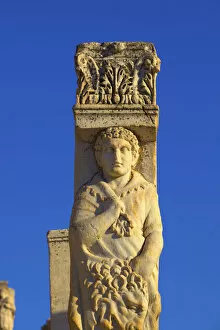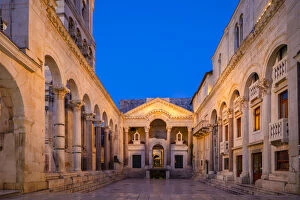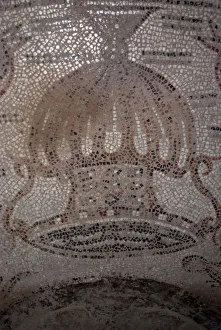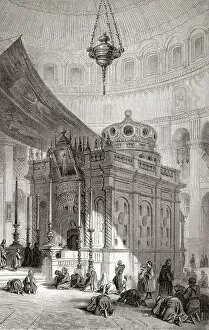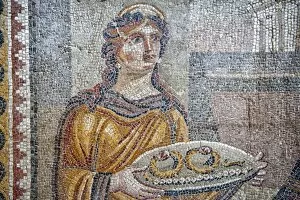4th Century Ad Collection
The 4th century AD was a time of grandeur and cultural exchange, as evidenced by the magnificent structures and artworks that have survived to this day
All Professionally Made to Order for Quick Shipping
The 4th century AD was a time of grandeur and cultural exchange, as evidenced by the magnificent structures and artworks that have survived to this day. In Ephesus, Turkey, the Gate of Hercules stands tall, a testament to the city's Roman past. Meanwhile, in Split on the Dalmatian Coast of Croatia, Diocletian's Palace showcases the opulence enjoyed by emperors during this era. Mosaic art flourished during this period as well. The mosaic depicting Oceanus and Tethys from ancient Daphne in Harbiye, Turkey is an exquisite example of craftsmanship. Another mosaic captures a hunter loading an ostrich onto a ship; its intricate details can be found on the floor of the Great Hunt. Traveling further west to Algeria brings us to Djemila where we find remnants such as the Baptistery and baths that provide insight into daily life during Roman times. Carceres towers at The Circus were part of Massenzio's imperial residence along Appian Way – now recognized as UNESCO World Heritage sites. Religion played a significant role in shaping society during this period too. Theodosius I, known as "the Great, " is depicted doing penance as an Orthodox Christian – highlighting his devotion and influence over religious affairs. Moving back towards Croatia's coast lies Diocletian's Palace once again - its interior reflecting both luxury and functionality for imperial living quarters centuries ago. Nearby in Jerusalem’s Christian Quarter stands The Church Of The Holy Sepulchre - a site revered by Christians worldwide for being built upon Jesus' crucifixion site. One cannot discuss the 4th century without mentioning Constantine I or Constantine the Great – renowned for his conversion to Christianity and subsequent establishment of Constantinople (present-day Istanbul). His legacy lives on through illustrations like those created by Gordon Ross which capture his influential reign. Lastly, let us not forget about leisurely pursuits.



